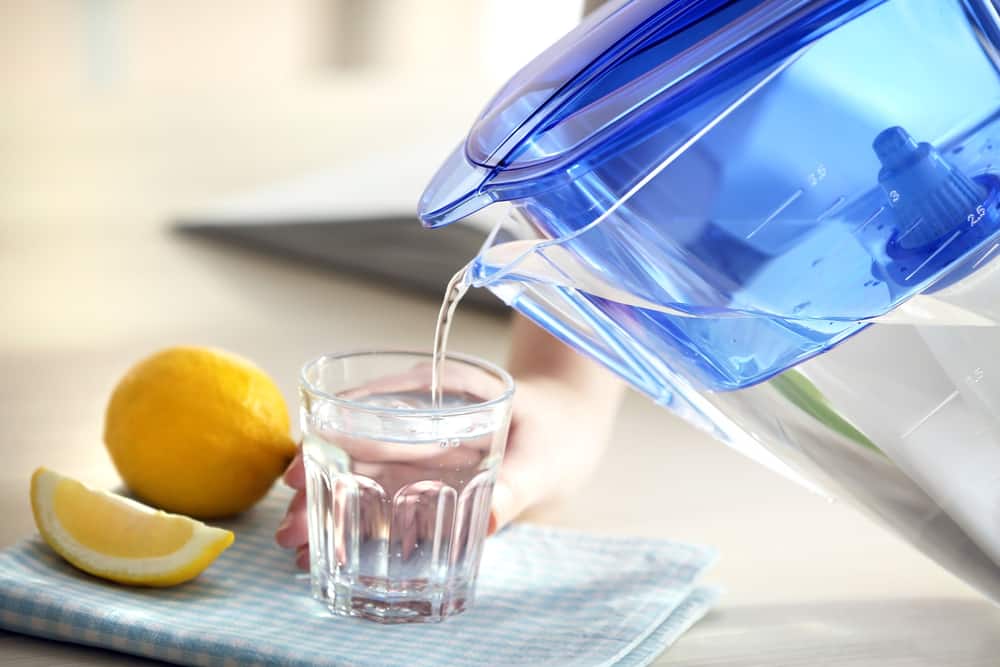
Water is a basic necessity for everyone and drinking water needs to be clean to make sure there are no adverse impacts on health. For this reason, people connect water filter systems to the water connections, which need regular filter replacement to ensure a clean and pure water supply.
However, some people have been asking about PUR water filter black stuff because it’s not normal. So, with this article, we share what the black stuff is and how you can take care of it.
What Is The Black Stuff In PUR Water Filter?
It is needless to say that the black particles in the water filter don’t look appealing and result in a bitter flavour in filtered water. This black stuff is the result of carbon particles or dust that has been wedged out of the filter.
The air bubbles’ removal and proper flushing and pre-soaking of the filter will limit the infusion of the black particles in filtered water. The most suitable method of preventing black stuff buildup in the water is to ensure the PUR filter is intact form and isn’t damaged.
PUR is known to use activated carbon, which includes pores, which are smaller than common carbon filters (the carbon is made from coconut shells). As far as the carbon layer (activated) is concerned, it is a porous substance that’s designed to collect the contaminants while ensuring an uninterrupted flow of water. In some cases, the new filters have some loose bits of the carbon layer, which break off and infuse into the water.
These carbon particles aren’t dangerous even if you consume them. Keep in mind that carbon-infused in the drinking water hasn’t been regulated by the Environmental Protection Agency, and there is no maximum amount of carbon that you can’t consume. In fact, some people believe that consuming these particles actually helps cleanse the blood, whiten up the teeth, and infuse good minerals, but there is no scientific backing. In addition, this black stuff can impact the water’s taste.
So, if you find the black stuff unappealing and don’t want it to influence the taste of water, you can prevent the carbon particles from infusing into the water. For instance, you can pre-soak and flush the PUT filter to remove the loose carbon particles and air bubbles (the trapped bubbles, to be precise). Keep in mind that if you do not use the correct pre-soaking and flushing method, the contaminant removal capacity will be reduced and will increase the chances of the black particles in the water.
As far as pre-soaking and flushing steps are concerned, the methods differ with the filter you are using.
Removing Activated Carbon Particles From The Filter
Pre-soaking and flushing the stored air bubbles from the PUR filter will help remove the loose carbon particles, which allows the free flow of water through the PUR filter. In addition, it increases the contaminant removal capacity and increases the filter’s lifespan. As far as the filters are concerned, we are sharing the correct carbon particle removal method for the specific PUR filters you are using;
PUR Pitcher Filters
When it comes down to the pitcher filters, there are two commonly used filters that are infused with activated carbon; these are made for dispensers and pitchers. The two most common filters include the plus filter with special lead reduction and the basic filter. You need to pre-soak the plus filter – you can submerge it in cool water for fifteen minutes, along with ten seconds of rinsing under fully cold water.
On the other hand, the basic filter can be washed under cold water for fifteen seconds. This process will help remove the loose carbon particles. Keep in mind that rinsing water should be cold because if the water temperature is higher than 82 degrees Fahrenheit, it will damage the filter, impacting its filtration capacity. Irrespective of which filter you are using, you need to look for trapped bubbles that can store the loose carbon particle.
As far as removing the air bubbles is concerned, you need to submerge the PUR filter in a straight/vertical position and start squeezing or tapping the filter for removing the trapped air. While you are flushing the filters, make sure that water pressure isn’t too high because it causes the flow of aerated water through the filter, which hinders the flushing of loose particles.